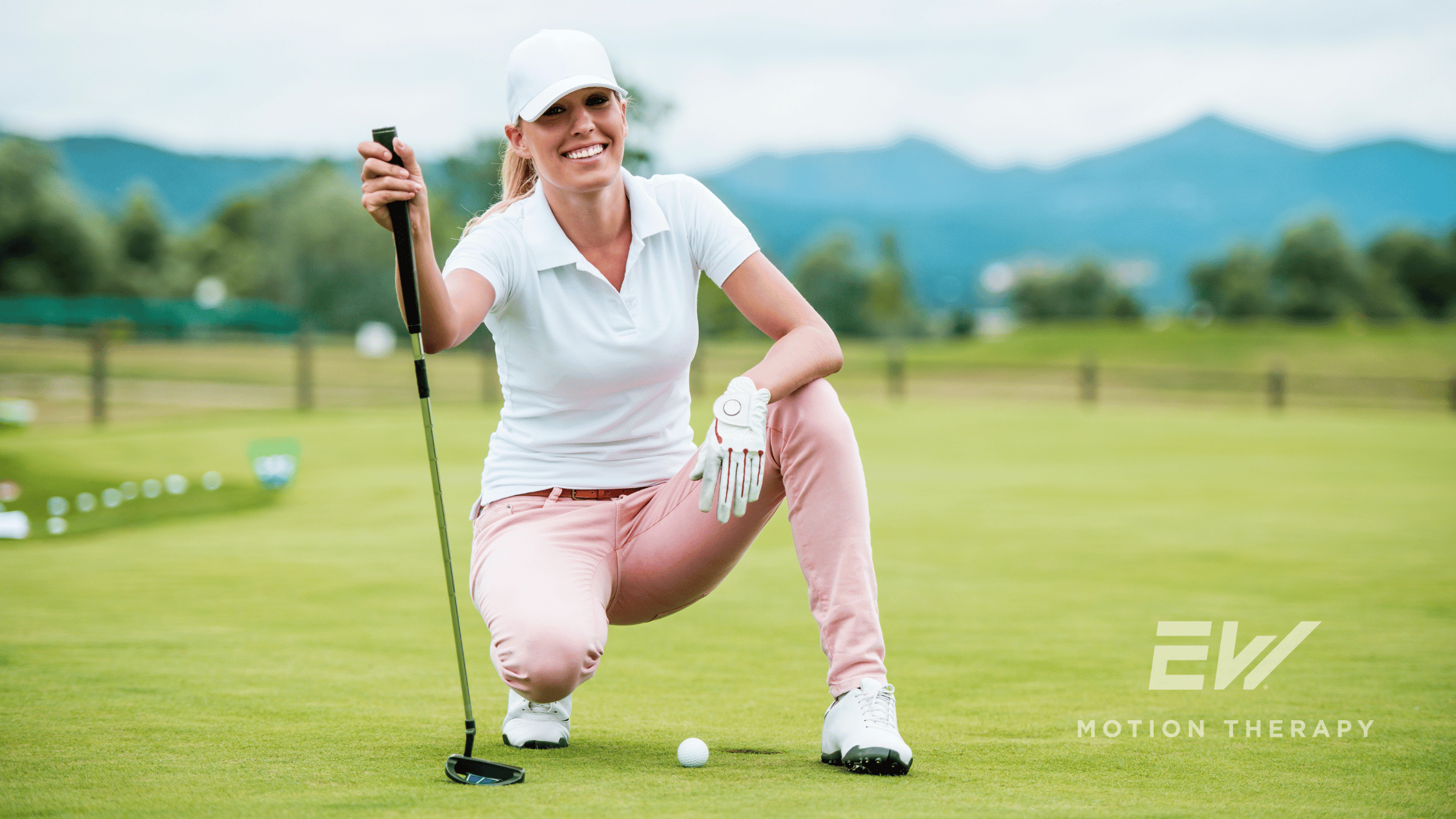Fitness Tips for Female Golfers: Improve Your Game with Personal Training

Licensed Physical Therapist, PT, DPT // EW Motion Therapy Meadowbrook/280
Golf is a sport of precision, strategy, and skill, but your physical fitness also plays a crucial role in determining your success on the course. For female golfers, improving areas like strength, flexibility, and endurance can significantly elevate performance. While golf may not seem as physically demanding as other sports, it requires a unique combination of physical and mental attributes best supported by a comprehensive fitness routine. In this article, we'll explore fitness tips for female golfers, focusing on essential areas to enhance their game and how personal training can provide an edge.
The importance of strength for female golfers
Many people underestimate the physical demands of golf. A powerful swing doesn't just happen—it results from full-body strength and proper mechanics. Strength training plays a pivotal role in boosting performance, especially for female golfers who might not naturally generate as much power as their male counterparts due to differences in muscle mass.
Key areas of strength to focus on
- Core: Your core is the foundation of your golf swing. A strong core helps stabilize your body and allows for greater rotational power, which is crucial for a more powerful and controlled swing. Exercises like planks, Russian twists, and medicine ball throws can improve core strength.
- Legs: Strong legs are essential for maintaining balance during the swing and walking the course. Building strength in the lower body can help female golfers maintain a consistent stance and generate force from the ground up. Squats, lunges, and deadlifts are excellent for building leg strength.
- Upper body: Your arms, shoulders, and back are crucial in generating swing speed and controlling the club. Focusing on upper body strength with exercises like push-ups, dumbbell rows, and shoulder presses can improve your swing mechanics and reduce the risk of injury.
Why strength matters in golf
Golf requires both power and endurance. Increasing strength in the right areas can lead to more explosive drives, better ball control, and a more consistent swing. Additionally, a stronger body is more resistant to fatigue, allowing you to maintain your performance throughout the entire round.
Flexibility: the key ingredient of a great golf swing
While strength is important, flexibility is just as vital to the success of your golf game. Without adequate flexibility, you risk limiting your range of motion, which can negatively impact your swing. Flexibility also plays a role in injury prevention, as tight muscles and joints can lead to strains and pulls, especially with the repetitive motions of golf.
Key areas of flexibility to focus on
- Hips: Hip flexibility is essential for maintaining balance and generating power. Hip flexibility allows for smooth rotation through your swing and reduces the strain on your lower back. Incorporating exercises like hip flexor stretches and pigeon poses into your routine can help.
- Shoulders and upper back: These areas are critical for a full golf swing. Improving flexibility in your shoulders and upper back will help you achieve a full range of motion and maintain control of your swing. Shoulder circles, chest stretches, and thoracic spine mobility drills can enhance flexibility in this area.
- Hamstrings and lower back: Flexibility in these areas helps you maintain a proper stance throughout your swing and avoid rounding your back, which can lead to injury. Yoga poses like downward dog and forward folds are excellent for improving flexibility in these muscles.
Why flexibility matters in golf
Flexibility allows for a smooth, controlled swing. When your muscles and joints can move freely, you can generate more power, maintain better form, and reduce the likelihood of injury. For female golfers, who may not naturally have the same range of motion as male golfers, improving flexibility can be the difference between a consistent swing and one that breaks down over time.
The role of personal training in golf fitness
Knowing where to start with a fitness routine can be challenging for many female golfers. This is where personal training can be incredibly valuable. A personal trainer with experience in golf-specific fitness can create a tailored workout program that addresses your unique needs and goals.
Customized workout plans
A personal trainer can assess your current fitness level, identify areas of weakness, and create a program that targets the muscles and movements essential for golf. Whether you need to build more core strength, improve your flexibility, or work on your balance, a personal trainer can help you develop a program that works for you.
Improved form and technique
One of the most significant benefits of working with a personal trainer is having someone to guide you through exercises with proper form. This ensures that you are doing the exercises correctly and effectively, which reduces the risk of injury. When you move better off the course, it translates into improved mechanics on the course.
Injury prevention
Golf can be tough on your body, especially if you play frequently or push your limits. A personal trainer can help you develop a balanced fitness routine that includes not just strength and flexibility training but also mobility exercises that keep your joints healthy and muscles supple, reducing the risk of common golf injuries like lower back pain or shoulder strains.
Mental preparation
Golf is as much a mental game as a physical one. Personal trainers can incorporate conditioning exercises that improve mental toughness, focus, and endurance. This will help you stay composed and sharp during long rounds or under competitive pressure.
Developing a balanced fitness routine
A balanced fitness routine for female golfers should include strength training, flexibility work, cardiovascular endurance, and mobility exercises. Here is an example of how you could structure your fitness routine:
- Strength training (2-3 times per week): Focus on compound exercises that engage multiple muscle groups, such as squats, deadlifts, and push-ups. Add core exercises like planks and rotational drills to improve stability and power.
- Flexibility and mobility (daily or every other day): Incorporate dynamic stretches before your round of golf to prepare your muscles and joints for movement. After your round or workout, use static stretches or yoga poses to increase flexibility and release tension.
- Cardiovascular training (2-3 times per week): Walking the course is a big part of golf, so improving your cardiovascular endurance will allow you to play longer without fatigue. Consider adding low-impact exercises like cycling, swimming, or brisk walking to improve your stamina.
- Recovery and injury prevention (ongoing): Don’t overlook the importance of recovery. Incorporate foam rolling, massage, and rest days into your routine to keep your muscles healthy and avoid overtraining.
Female golfers can significantly benefit from focusing on strength and flexibility as part of their fitness routine. These two areas, when balanced, provide the foundation for a powerful, efficient, and injury-resistant golf game. Working with a personal trainer who understands the unique physical demands of golf can help you develop a personalized fitness plan that takes your game to the next level. Our trainers at EW Motion Therapy are experts at tailoring exercise plans to our clients’ needs and goals, whether they are NFL players or grandmothers wanting to stay active.
Whether you're a beginner or a seasoned golfer, investing in your fitness is an investment in your game. To learn more about how personal training can enhance your overall health and well-being, click the button below to download our answers to 20 frequently asked questions.


